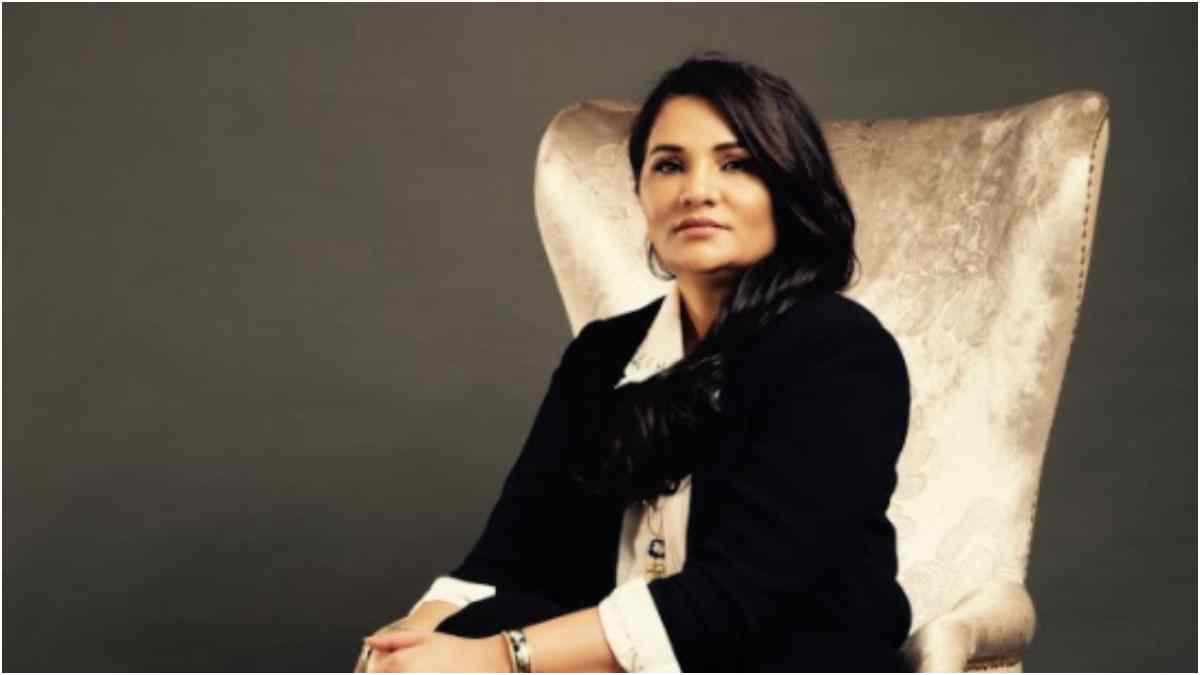With a few hours to go before her wedding ceremony, the bedecked bride is surrounded by her flock of damsels in sustained preparation. One brushes together her lustrous locks while another flatly strokes the immaculate pleats of her attire. Her hierarchically-assembled bangles have been slid through her delicate, mehendi-smeared forearms and a bindi sits centred on her forehead, not a millimetre out of place. And t h e n c o m e s the part that is overplayed by numer- ous television commercials nowadays — the opulent bridal jewellery set descends upon her neckline with the help of a more authoritative family member of the bride, usually the mother. If the situation allows for it, the set is given a tad more emphasis with one of the bride’s friends straightening the earring, necklace or maangtika to ensure the underside of it is turned inwards. Drum rolls and dramatic music follow. Insert the name of the jewellery brand and a sentimental dialogue, or better still, an empowered line of wit for the manslayers. And lo and behold, the twenty-firstcentury advertisement for a commercial Indian jewellery brand is ready to besiege the nation’s wedding market.
But the line of approach is vastly different for jewellery designer Sunita Shekhawat, who specialises in reversing the very underside of traditional jewellery sets into an exclusive art form and style in its own right. Owing to her patronage and renowned expertise, no longer does the Meenakari art form play as a rear filler to its more prominent Kundan or Polki forefronts. Hence, Shekhawat made her breakthrough into the charged market of jewellery design by breathing a new life into that eternally underplayed member of Indian jewellery design, namely, Meenakari.

An invention of the Persian craftsmanship which thrived during the Sasanian era, the Meenakari art form depicts the elaborate process of enamelling and ornamenting gold surfaces with intricate designs using liquid or powdered minerals and gemstones. Gold’s durability, lustre, ductility and superior hold made it the preferred medium for Meenakari, b u t hu mb l e r metals such as silver and copper were adopted once the art form dispersed itself into the making of handicrafts. Despite its perceivable finesse, the componential simplicity of Meenakari artwork tended to place it with the lesser visible aspects of ornamental jewellery, as previously discussed. However, several art historians argue that Meenakari was much more than just being a political placement of opulent worth. Its strategic placement in the traditional undersides was invented to add to the ornament’s reversibility and an element of hidden design. Subsequently, the Mughals brought along the mysterious alchemy of bright enamels to India, and a hereditary community of goldsmiths earned the title of Meenakars for their mastery over it.
A multitude of centuries and artistic legacies later, the vibrant art form continued to glisten over the arid beauty of Rajasthan. Owing to her ancestral links of friendship with the royal houses of Jodhpur, Shekhawat had the privilege of accessing a highly limited edition of handcrafted jewellery that remained hidden to the common eye. A glimpse into the jewellery collections of the past inspired Shekhawat to recreate the magnificent Meenakari and reintroduce it to the modern world. With this resolve, Sunita Shekhawat’s jewellery brand was conceived.
Twenty-five years of academic curiosity and experimentation with craftsmanship helped Shekhawat’s design philosophy to evolve into what it stands for today. Her exclusive dedication to distinctive handmade amalgamations and unusual colour palettes form two of her main USPs. Earning national and global distinction as the ‘Modern Meenakaar’ of India, Shekhawat continues to reinvent her design sensibility as a custodian of Meenakari’s age-old legacy. At present, Shekhawat’s jewellery collection is displayed to buyers in two flagship stores, one in Jaipur and the other in New Delhi.
Shekhawat continues to deliver the finest customisations and reinventions to a growing entourage of brides. While she’s at it, she discloses news on her latest addition to the timeless masterpieces of Sunita Shekhawat, namely, the Tanzanite set. Marvellously hand-crafted by skilled craftsmen, this set has been curated using the finest of elements. The deep aquamarine hues of enormous tanzanite are lavishly strung together with an assortment of uncut polkis and handpicked south sea pearls on a contrasting base of 22-carat gold. The deep blue tones of the massive tanzanite strengthen the beauty of gold and harmonise the modern layout with traditional aesthetics. What’s more, the Tanzanite set is not the first in conveying Shekhawat’s consistency with a thorough know-how of not just the art form, but also its symbiotic possibilities with the world in which it presently thrives. This, and each of Shekhawat’s Meenakari variant, confesses an exclusive style affair of its own — from bygone times to those that are yet to descend upon our necklines.
Urvashi Singh is a writer, blogger and daughter of the Khimsar noble family.







